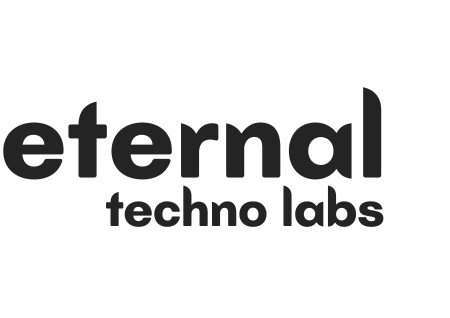What is the Top AWS Developer Tool List?
As cloud computing continues to shape the modern digital landscape, Amazon Web Services (AWS) remains the leading platform empowering developers and enterprises to build, deploy, and scale applications efficiently. For developers and businesses seeking to streamline software delivery and automation, exploring the AWS developer tools list is the first step towards mastering cloud-native development.
These tools are designed to help development teams build applications faster, maintain agility, and enhance productivity through automation and continuous integration. From version control to deployment pipelines, AWS provides an extensive suite of developer-centric services that make building in the cloud seamless. In this article, we’ll explore what AWS developer tools are, their benefits, and a comprehensive list of essential AWS tools every developer should know.
What Are AWS Developer Tools and Their Benefits?
Before diving into the full AWS tools list, it’s important to understand what AWS developer tools are and how they contribute to efficient software delivery.
What Are Developer Tools in AWS?
AWS Developer Tools are a suite of cloud-based services designed to help developers and DevOps engineers automate software development workflows—from source code management and build automation to continuous integration and delivery (CI/CD).
These tools integrate seamlessly with other AWS services and third-party applications, enabling developers to focus on writing quality code while AWS manages scalability, reliability, and security.
Key Benefits of AWS Developer Tools
AWS Developer Tools are a suite of cloud-based services designed to help developers and DevOps engineers automate software development workflows—from source code management and build automation to continuous integration and delivery (CI/CD).
These tools integrate seamlessly with other AWS services and third-party applications, enabling developers to focus on writing quality code while AWS manages scalability, reliability, and security.
1. Automation and Speed:
AWS tools reduce manual intervention in software builds, tests, and deployments, speeding up delivery cycles and improving consistency.
2. Scalability and Flexibility:
Developers can easily scale their environments according to project requirements without worrying about underlying infrastructure.
3. Security and Compliance:
Built on AWS’s robust infrastructure, these tools follow best security practices, helping teams meet compliance standards effortlessly.
4. Integrated DevOps Environment:
With AWS’s CI/CD ecosystem, development and operations teams can collaborate effectively to achieve faster innovation.
5. Cost-Efficiency:
Most AWS tools are pay-as-you-go, making them affordable and scalable for startups and enterprises alike.
Let’s Explore AWS Developer Tools List
AWS offers a wide range of developer tools catering to different stages of the software development lifecycle. Let’s explore the most important ones, how they work, and their unique benefits.
1. AWS CodeCommit
Category: Source Control Management
Overview:
AWS CodeCommit is a fully-managed source control service that hosts secure Git repositories. It allows teams to collaborate on code with high availability and encryption.
How It Works:
Similar to GitHub or Bitbucket, developers can push and pull code using Git commands, integrate CodeCommit with their CI/CD pipelines, and manage code reviews efficiently.
Benefits:
- Highly secure with encrypted repositories
- Integrates with AWS CodePipeline and CodeBuild
- Scalable for large teams and projects
Pricing:
Free for up to five active users per month; beyond that, pay-as-you-go pricing applies.
2. AWS CodeBuild
Category: Continuous Integration (CI)
Overview:
AWS CodeBuild automates the process of compiling source code, running tests, and producing deployable software packages.
How It Works:
Developers define build instructions in a buildspec.yml file, and CodeBuild executes these instructions in an isolated environment. It integrates seamlessly with CodeCommit, CodePipeline, and third-party tools like GitHub and Jenkins.
Benefits:
- Fully managed and scalable build service
- Supports multiple programming languages
- Automatically scales to handle parallel builds
Pricing:
Pay only for the build time consumed, with free tier usage available for small workloads.
3. AWS CodeDeploy
Category: Continuous Deployment (CD)
Overview:
AWS CodeDeploy automates application deployments to a variety of compute services such as Amazon EC2, AWS Lambda, and on-premise servers.
How It Works:
It allows developers to deploy new versions of applications automatically, reducing downtime and human error. You can choose deployment strategies like rolling updates or blue/green deployments for safe rollouts.
Benefits:
- Minimises downtime during deployment
- Customisable deployment configurations
- Works across cloud and hybrid environments
Pricing:
Free for AWS Lambda and EC2; for on-premise deployments, small per-instance fees apply.
4. AWS CodePipeline
Category: CI/CD Orchestration
Overview:
AWS CodePipeline automates the entire software release process—from code commit to build, test, and deployment.
How It Works:
It acts as the backbone of your DevOps pipeline, connecting CodeCommit, CodeBuild, and CodeDeploy into a continuous flow. Developers can also integrate third-party tools such as GitHub Actions or Jenkins.
Benefits:
- Automates release workflows
- Enhances collaboration and delivery speed
- Real-time tracking of build and deployment status
Pricing:
Charged per active pipeline per month, with a free tier for the first pipeline.
5. AWS Cloud9
Category: Cloud-based Integrated Development Environment (IDE)
Overview:
AWS Cloud9 is a browser-based IDE that enables developers to write, run, and debug code directly in the cloud.
How It Works:
It comes preconfigured with essential programming tools, SDKs, and terminal access to AWS resources. Developers can collaborate in real-time, making it ideal for distributed teams.
Benefits:
- No installation required
- Real-time pair programming
- Deep integration with AWS services
Pricing:
Free for use, but you pay for the underlying EC2 instance or compute environment used.
6. AWS X-Ray
Category: Application Monitoring & Debugging
Overview:
AWS X-Ray helps developers analyse and debug distributed applications built on AWS, providing insights into performance and errors.
How It Works:
It traces user requests through applications and displays a visual map showing where bottlenecks or failures occur.
Benefits:
- Identifies latency issues
- Improves app performance and reliability
- Integrates with multiple AWS services
Pricing:
Free tier includes 100,000 traces per month; after that, pricing is usage-based.
7. AWS CodeStar
Category: Unified Developer Platform
Overview:
AWS CodeStar brings together various AWS developer tools into a unified platform. It simplifies project setup and offers dashboards for managing development activities.
How It Works:
Developers can quickly create new projects using pre-built templates that integrate services like CodeCommit, CodeBuild, and CodePipeline.
Benefits:
- Quick project setup with templates
- Centralised management dashboard
- Enables team collaboration and access control
Pricing:
Free to use; you pay only for the AWS resources used within your projects.
8. AWS Elastic Beanstalk
Category: Application Deployment & Management
Overview:
AWS Elastic Beanstalk is a Platform as a Service (PaaS) that simplifies application deployment and scaling without requiring infrastructure management.
How It Works:
Developers upload their application, and Elastic Beanstalk automatically handles provisioning, load balancing, and scaling.
Benefits:
- Simplifies DevOps workflows
- Automatically scales applications
- Supports popular languages like Python, Java, PHP, and Node.js
Pricing:
Free to use, with charges applying only for the AWS resources deployed (EC2, S3, etc.).
9. AWS CloudFormation
Category: Infrastructure as Code (IaC)
Overview:
AWS CloudFormation enables developers to model and provision AWS resources using code-based templates.
How It Works:
It uses YAML or JSON templates to automate the setup of entire infrastructure environments, ensuring consistency and repeatability.
Benefits:
- Reduces human error in setup
- Enables infrastructure version control
- Speeds up deployment of complex environments
Pricing:
Free to use; you only pay for the AWS resources provisioned.
10. AWS CLI and SDKs
Category: Command Line & Software Development Kits
Overview:
AWS Command Line Interface (CLI) and SDKs enable developers to interact with AWS services programmatically.
How It Works:
CLI allows terminal-based management of AWS resources, while SDKs (for Python, JavaScript, Java, etc.) simplify integration with applications.
Benefits:
- Speeds up resource management
- Enables automation and scripting
- Supports multiple programming languages
Pricing:
Free tools are available for all AWS users.
Conclusion: Empower Your Cloud Journey with Expert AWS Developers
Mastering the AWS developer tools list is key to building, deploying, and managing modern cloud applications effectively. These tools streamline software delivery, improve scalability, and reduce operational costs—making them invaluable for developers and enterprises alike.
However, using these tools to their full potential requires deep AWS expertise. If you’re looking to accelerate your cloud transformation, it’s time to hire AWS developers from a certified AWS Partner Company. Skilled AWS professionals can help you integrate, automate, and optimise your development pipelines, ensuring faster delivery and superior performance in every deployment.
With the right AWS tools and the right team, your business can achieve innovation, agility, and long-term cloud success.



